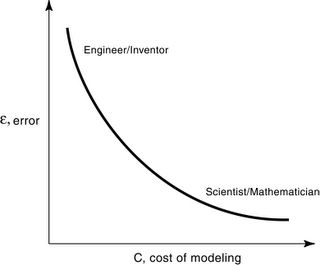Monday, March 07, 2005
Models live in the error-cost plane
In The Design of Innovation, I spend a fair amount of time talking about the economy of modeling, arguing that models live in an error-cost plane:
When scientists or mathematicians build models, they are largely interested in developing more accurate models of the world whatever the costs of so doing. When engineers or inventors use models, they are generally interested in designing better gizmos. As a result, an implicit cost-benefit calculation comes into play.
Specifically engineers tend to weigh the marginal costs of modeling against the the marginal benefits of the modeling to the technology being developed. As a result, engineers generally build and use models that are less sophisticated than the most sophisticated models available, but that choice is guided, not by simple-mindedness, but by a desire to be efficient in the race to build better technology.
Economical thinking or modeling in this way has been extraordinarily helpful in moving quickly to build little models that maximally advance the state of genetic algorithm art. The approach may not be as elegant as some, but it does give a terrific amount of insight for the amount of effort expended (see my 1 Feb post here on a similar subject).
The blogosphere thrives on "moving quickly to build little models." The rules are simple: post; get instant critiques; rework; repost. Such is also the open source algorithm. Release often, debug small bits, witness the macro project emerge. Those that defect and micro-model, in the blogsphere or otherwise, are advantaged in the long term though miss "the glory" of a single, unified, "more accurate" magnum opus. My post described that mentality as "hubris"; your's described it more diplomatically as "largely interested in developing more accurate models of the world whatever the costs of so doing."
Keep up the great work on the blog. Should you find the time, a RSS feed would be indispensible for fans such as this correspondent. Thanks!
<< Home



